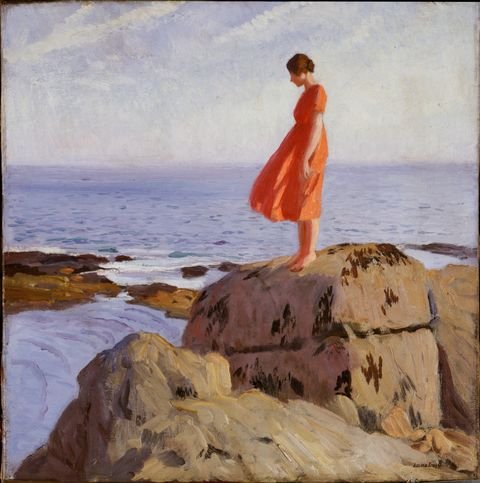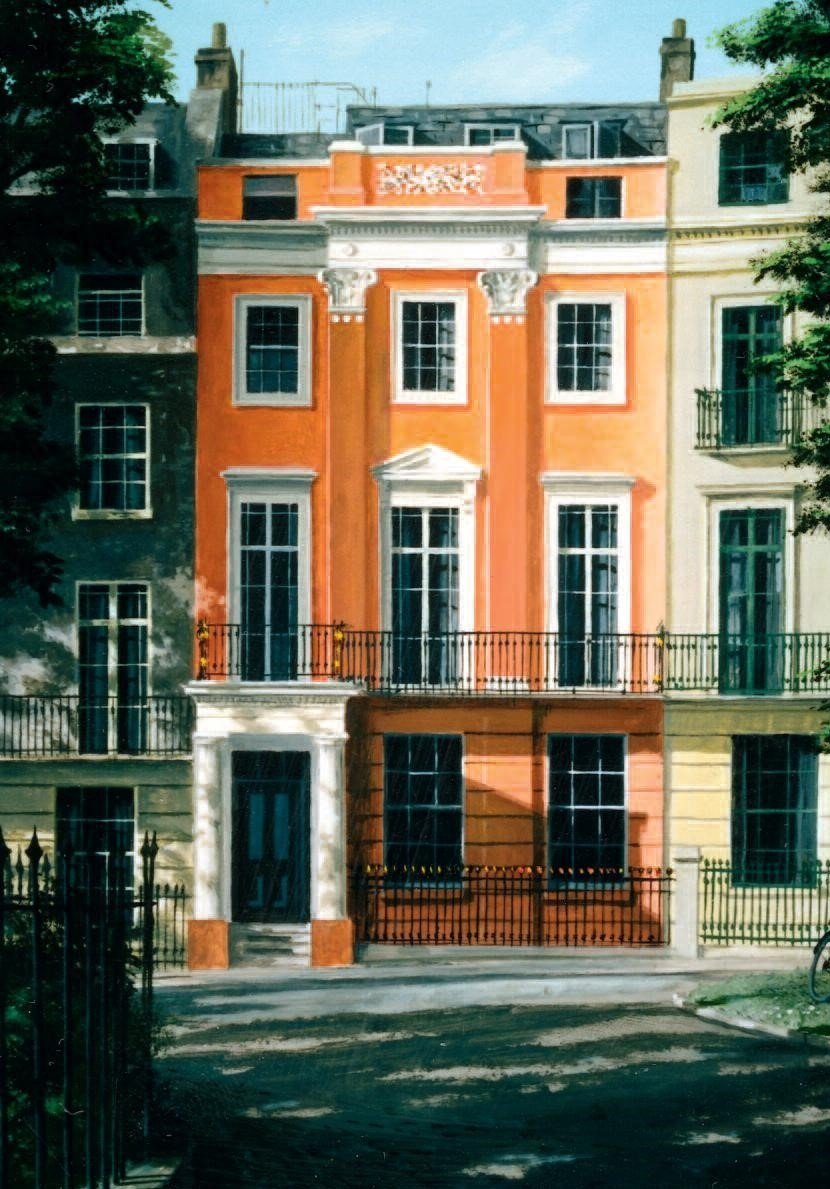
Made in Ancient Egypt
This fascinating exhibition at the Fitzwilliam Museum in Cambridge is the first to focus on those who built one of history’s most remarkable civilisations. It brings to light the daily lives of ordinary Egyptians, from stonemasons and coffin decorators to royal sandal makers, revealing their untold stories alongside the technology and techniques behind the extraordinary items on display.

Marie Antoinette
This series of lectures and visit will provide an insight into the life and times of Marie Antoinette and consider her influence both as a fashion icon and patron of the arts as well as her reputation for frivolity and excess. She was a complex figure whose style, youth and notoriety have all contributed to her timeless appeal.

Marie Antoinette
The lecture will explore Marie Antoinette’s taste in the decoration and furnishing of both her public and private apartments at Versailles and the Petit Trianon. Taking up the newly fashionable classical style, and with great attention to detail, she created elegant and intimate interiors painted in pastel shades for which she became renowned.

In Search of Marie Antoinette
Marie-Antoinette commissioned some of the most brilliant craftsmen of the eighteenth century to furnish her interiors, creating intimate and elegant rooms evoking the new spirit of classicism, refinement and luxury. The Wallace Collection has fine examples of furniture made by the Queen’s favourite cabinet-maker, Jean-Henri Riesener , seat furniture by George Jacob and other craftsmen who worked for the Royal family as well as work by the Queen’s portrait painter, Elisabeth-Louise Vigée le Brun.

Visit to Paris and the Chateau de Chantilly
A three-day visit to Paris and the Chateau de Chantilly and its special exhibition Les Très Riches Heures du Duc de Berry.The visit will include tours of the Musée de Cluny, with its splendid collections of medieval art including the Lady and the Unicorn tapestries, the fabulous collections of paintings and furniture as well as the eighteenth-century interiors of the Chateau de Chantilly and the special exhibition, which celebrates the Duke de Berry’s patronage and love of books.

The Design Museum and Splash! A Century of Swimming and Style
The Design Museum opened in 2016 and is housed in the iconic 1960s Commonwealth Centre. The Museum explores the role of design in shaping everyday life as well as hosting a range of temporary exhibitions, many of which focus on specific design movements and influential designers.
This event is unfortunately cancelled.

Charles Darwin at Down House, Kent
Down House was bought in 1842 by Charles Darwin, who needed more space and countryside for his growing family. It remained the family home until his death in 1882. and the house survives little changed today with family portraits, furniture and personal possessions.
This event has been postponed.

VISIT TO ARUNDEL CASTLE,PARHAM HOUSE AND PETWORTH HOUSE
Three days visiting Arundel Castle, one of the finest neo-Gothic fantasies of the Victorian Age, Petworth House, a splendid Baroque palace and Parham House, a glorious Elizabethan country house restored and re-imagined in the twentieth century.

Scenes of Childhood, Rural Idylls and Sargent’s American Heiresses
A day of exhibitions with those at Burgh House highlighting the work of three much-loved artists and illustrators who have associations with Hampstead and, at Kenwood House ,a splendid exhibition of John Singer Sargent’s striking portraits of American heiresses who married into the British and European aristocracy.

Versailles: Science and Splendour
This fascinating and most attractive exhibition explores how the French monarchy, from the time of the three great monarchs, Louis XIV, Louis XV and Louis XVI, harnessed scientific knowledge as a tool of power and influence at home and abroad.

Spencer House
The magnificent Spencer House is one of the finest surviving mansions in London. Built for the 1st Earl Spencer and his wife Georgiana Poyntz between 1756-66, the house is celebrated for its glorious interiors designed by John Vardy and James Athenian Stuart.

The Creation of St James’s, London
The lecture will provide an insight into the architectural development and history of Spencer House with its glorious interiors by John Vardy and James Stuart.

The Creation of St James’s, London
The lecture will provide an insight into the architectural development and social history of St James’s.

The Creation of St James’s, London
The lecture will provide an insight into the architectural development and social history of St James’s.

Freud Museum and the exhibition Women & Freud: Patients, Pioneers, Artists
The family home of the Freud family was turned into a museum in 1982 to display Sigmund Freud’s wide-ranging collections of antiquities, furniture, including his famous couch, textiles, ceramics, prints and paintings, as well as many unique documents relating to Sigmund and Anna Freud and the history of psychoanalysis.

Lost Gardens of London
This delightful exhibition, Lost Gardens of London, brings to life long-forgotten green spaces, ranging from princely pleasure grounds and private botanical gardens to humble allotments and defunct squares, artists’ gardens and eccentric private menageries.

William Morris & Art from the Islamic World
This splendid exhibition explores William Morris’s fascination with the arts of the Islamic world and the impact it was to have on his contribution to the Arts and Crafts movement.

Emery Walker’s House and the William Morris Society
Emery Walker was an engraver and printer associated with the revival of fine printing in England in the late nineteenth and early twentieth centuries. He became friends with many of the members of the Arts & Crafts Movement and met William Morris, who lived close to him in Hammersmith, in 1883. They shared a passion for books, architecture and design and Walker inspired Morris to set up his famous Kelmscott Press.

Boston Manor
A hidden gem, Boston Manor is a fine example of an early seventeenth-century suburban house. Built for Lady Mary Read in 1622-3, the house was purchased in 1670 by James Clitherow, a City merchant and remained in the Clitherow family until 1924 when the estate was sold to the Brentford Urban District Council. It has recently undergone a major programme of restoration which has revealed the many layers of decoration preserved over two centuries which give fascinating insights into changing domestic tastes.

Boston Manor: A Microcosm of Changing Fashions in Domestic Decoration 1600-1800
The lecture will provide insights into the development of more sophisticated room arrangements and changing taste in interior decoration from 1600 to 1800. Boston Manor provides a microcosm of changing fashions, with elaborate ceilings and overmantels of strapwork decoration and allegorical themes in the Jacobean age giving way to a more elegant form of living, with reception rooms displaying a range of decorative elements including newly-fashionable wallpapers.

Petworth House and Arundel Castle
Two great ducal seats, Petworth and Arundel were family strongholds since early medieval times. Petworth was built as a Baroque palace for the Duke of Somerset, whereas successive Dukes of Norfolk at Arundel transformed their ancient castle resulting in the great Victorian edifice of today.

The Stanley Spencer Gallery
The Stanley Spencer Gallery, housed in a converted Methodist chapel, opened in 1962 and is devoted to the works of Stanley Spencer. The present exhibition The Cookham Brotherhood: The Art of Gilbert and Stanley Spencer celebrates the profound influence that Cookham had on Stanley (1891-1959) and his brother Gilbert 1892-1979) and demonstrates both their unified vision as well as their rivalry.

Lamb House and Great Dixter
A day in East Sussex exploring the homes of the American writer, Henry James and the celebrated writer and horticulturist, Christopher Lloyd

Recreating the Medieval Manor House
The picturesque cottage became popular as a feature within the landscape garden in the late eighteenth century, developing into the vogue for the cottage orné during the Regency period. In the later nineteenth century antiquarians and Arts and Crafts enthusiasts rescued and lovingly restored medieval manor houses, enraptured by their romance, history and atmosphere.

Now You See Us: Women Artists in Britain 1520-1920
This ambitious and enlightening exhibition charts the trials as well as the triumphs of women artists working in Britain over a period of four hundred years. It celebrates the work of well-known names such as Artemisia Gentileschi, Angelica Kauffman, Julia Margaret Cameron and Gwen John as well as revealing the work of those who have been all but forgotten.

The Craft of Tea 1660 - 2024
This exhibition explores the history of the tea trade in Europe and the popularity of the drink from its introduction in the mid-seventeenth century to the present day. Fine silver objects from The Chitra Collection, a remarkable private museum of historic tea wares, will be seen alongside loans from the Pearson Silver Collection and the Goldsmiths’ Company.

The China Contagion: Tea and Tea Wares
Samuel Johnson’s China contagion reflects the fevered enthusiasm for tea drinking and the accompanying social discourse in the eighteenth century. The lecture will explore the fascinating history of tea-drinking in England from the seventeenth to the nineteenth centuries.

The Faringdon Collection
The Faringdon Collection was formed by Gavin, 2nd Lord Faringdon, the owner of Buscot Park. He purchased the early nineteenth-century townhouse in Brompton Square in 1953 and restored it as a private house. In contrast to the Palladian formality of Buscot, the London house was a blank canvas on which he was able to bring his strong decorative sense to bear, filling it with artworks and furnishings that reflected his eclectic taste and love of the unusual.

Visit to Drumlanrig Castle, Dumfries House and the Burrell Collection
A three-day visit to South-West Scotland with special visits to the spectacular seventeenth-century Drumlanrig Castle and Dumfries House, famous for its unrivalled collection of Chippendale furniture and a curatorial tour of the magnificent Burrell Collection in Pollok Park, Glasgow.

Gainsborough’s House and the exhibition Philip de László, Master of Elegance
Gainsborough’s house, the childhood home of Thomas Gainsborough, has recently re-opened following a major building and renovation project to create a new gallery space celebrating Gainsborough’s work as well as a splendid new exhibition space.

The Artist in Suffolk
Suffolk, its landscape and people, its towns and industry has provided inspiration to artists from Thomas Gainsborough and John Constable to Cedric Morris in the twentieth century. The lecture will explore the history of Sudbury, its silk industry and the artists who worked in this county.

Leighton House and Sambourne House
The Holland Park area in the late nineteenth century became a favourite place for artists, writers and intellectuals, with many subsequently settling there. Leighton House and ,Sambourne House are very different but equally fascinating examples of the artist-house.

The Artist House in Kensington
Artist houses of the later nineteenth century provide a fascinating glimpse of the personalities involved, the architecture and Victorian decoration and design. The lectures will provide a background to the studio houses of the Holland Park area and the fashionable Aesthetic interior of the 1880s made popular by the many books and magazines published at that time and influenced by the work of James McNeill Whistler, Walter Crane, William Morris and Owen Jones.

Lincoln’s Inn
The Honourable Society of Lincoln’s Inn is one of the four medieval societies of lawyers known as the Inns of Court. The precise date of its foundation is unknown but its earliest records, known as the Black Books, date to 1422. . The Inn probably takes its name from Henry de Lacy, third Earl of Lincoln who appears to have been the Inn's patron, and whose own house was close by in Shoe Lane.